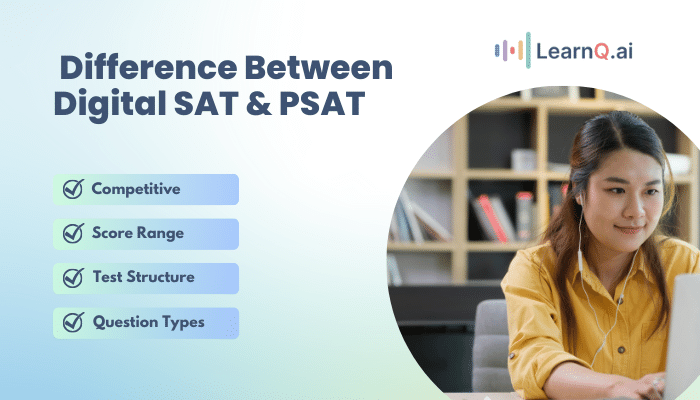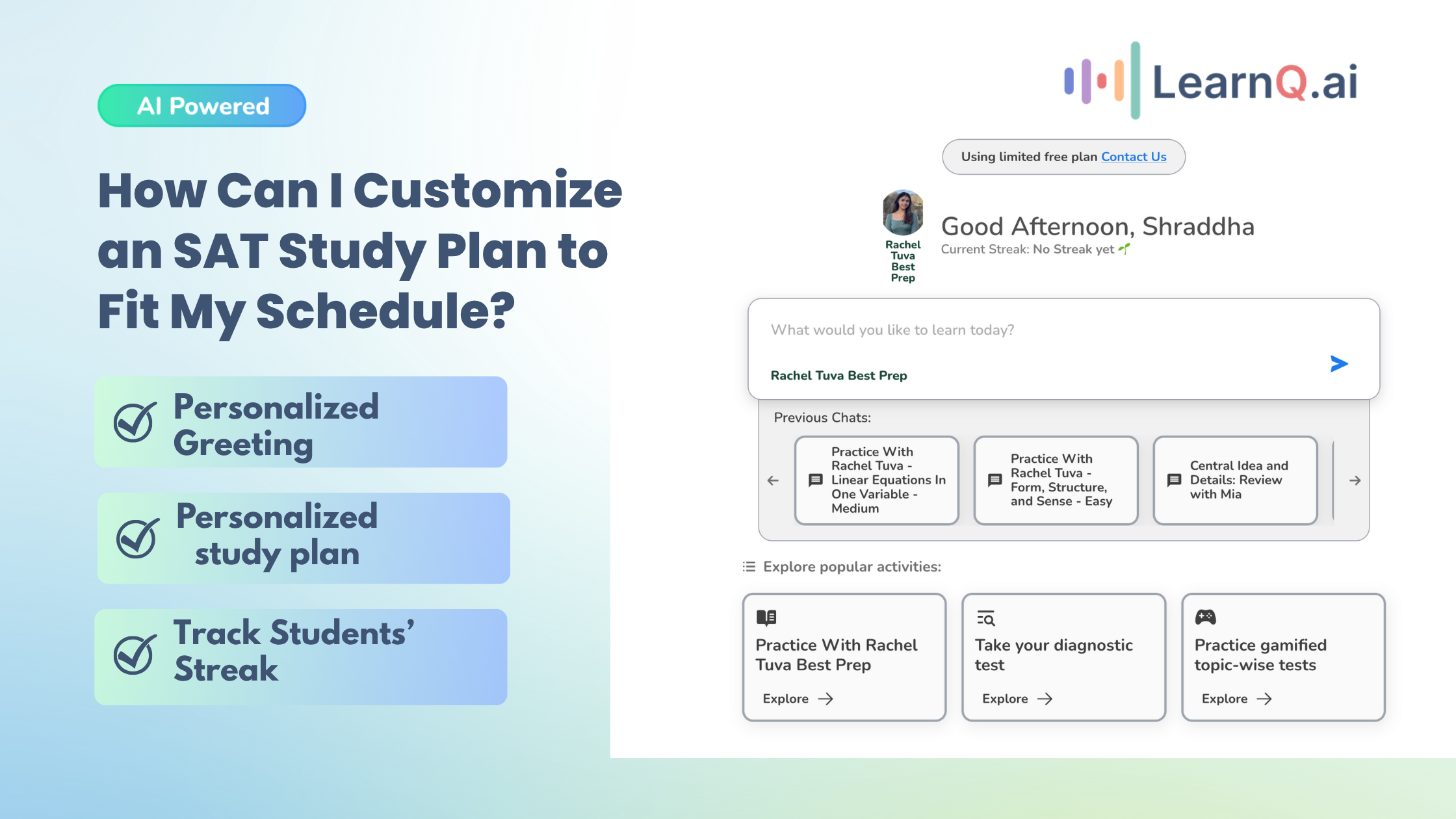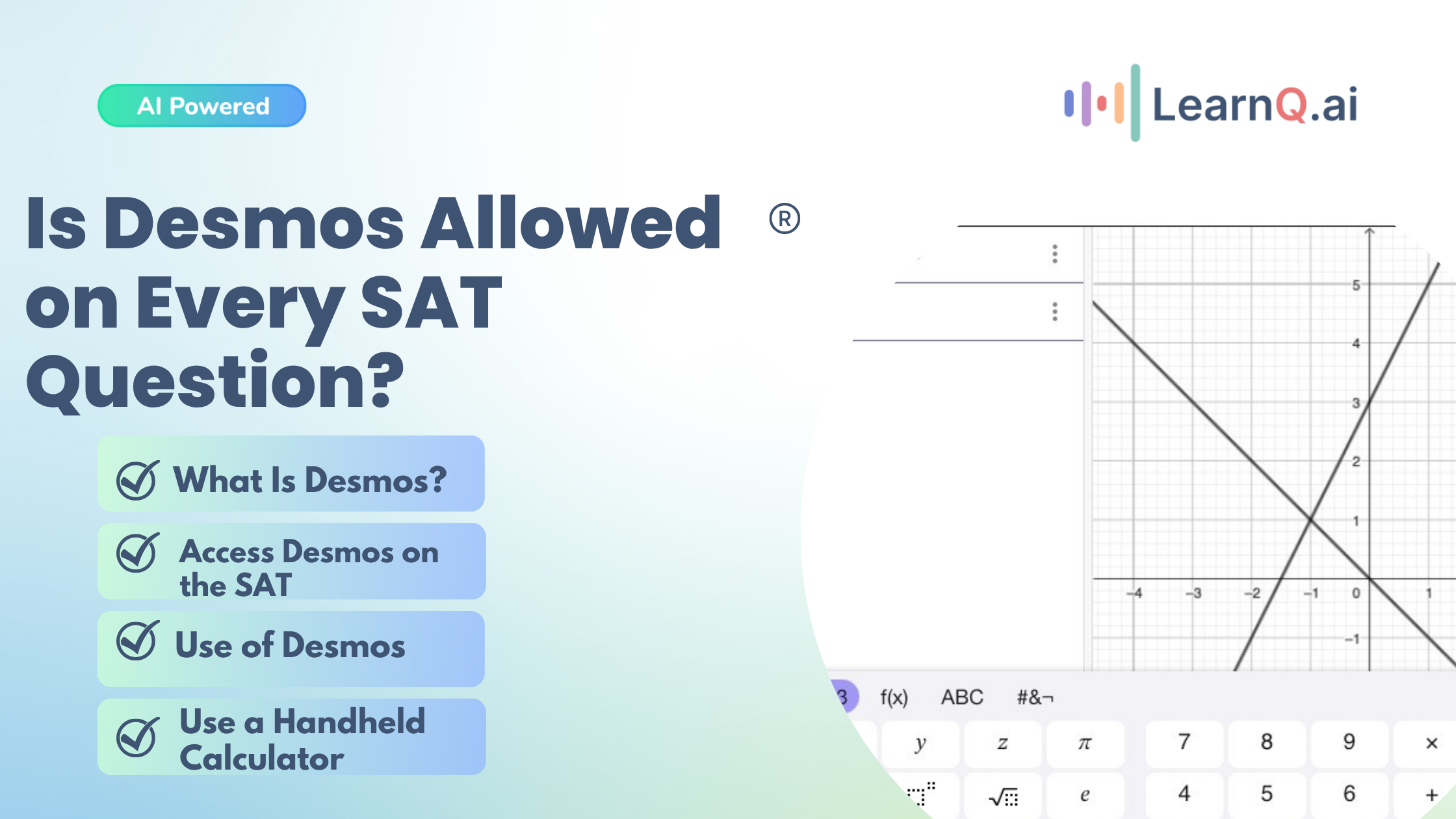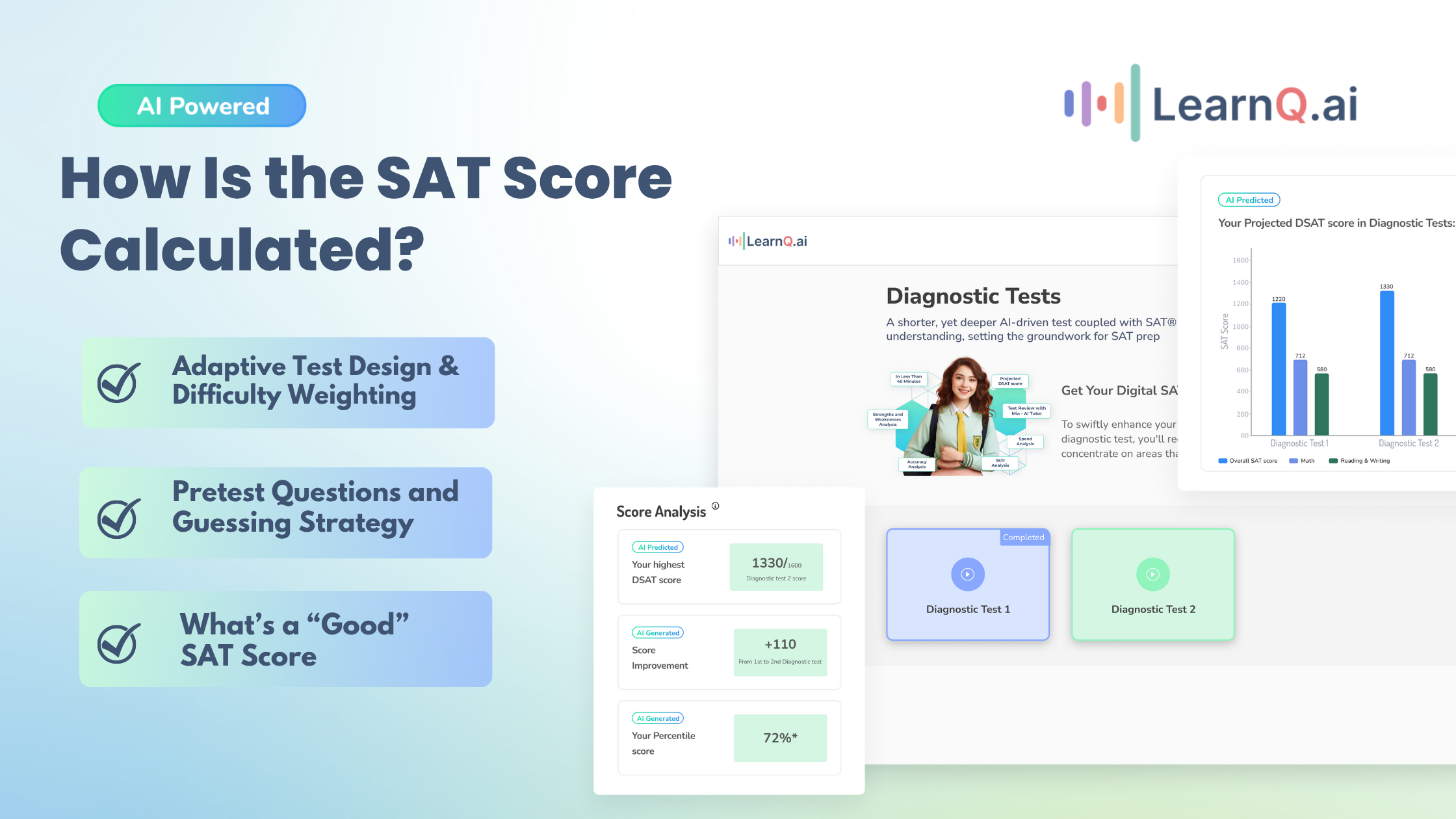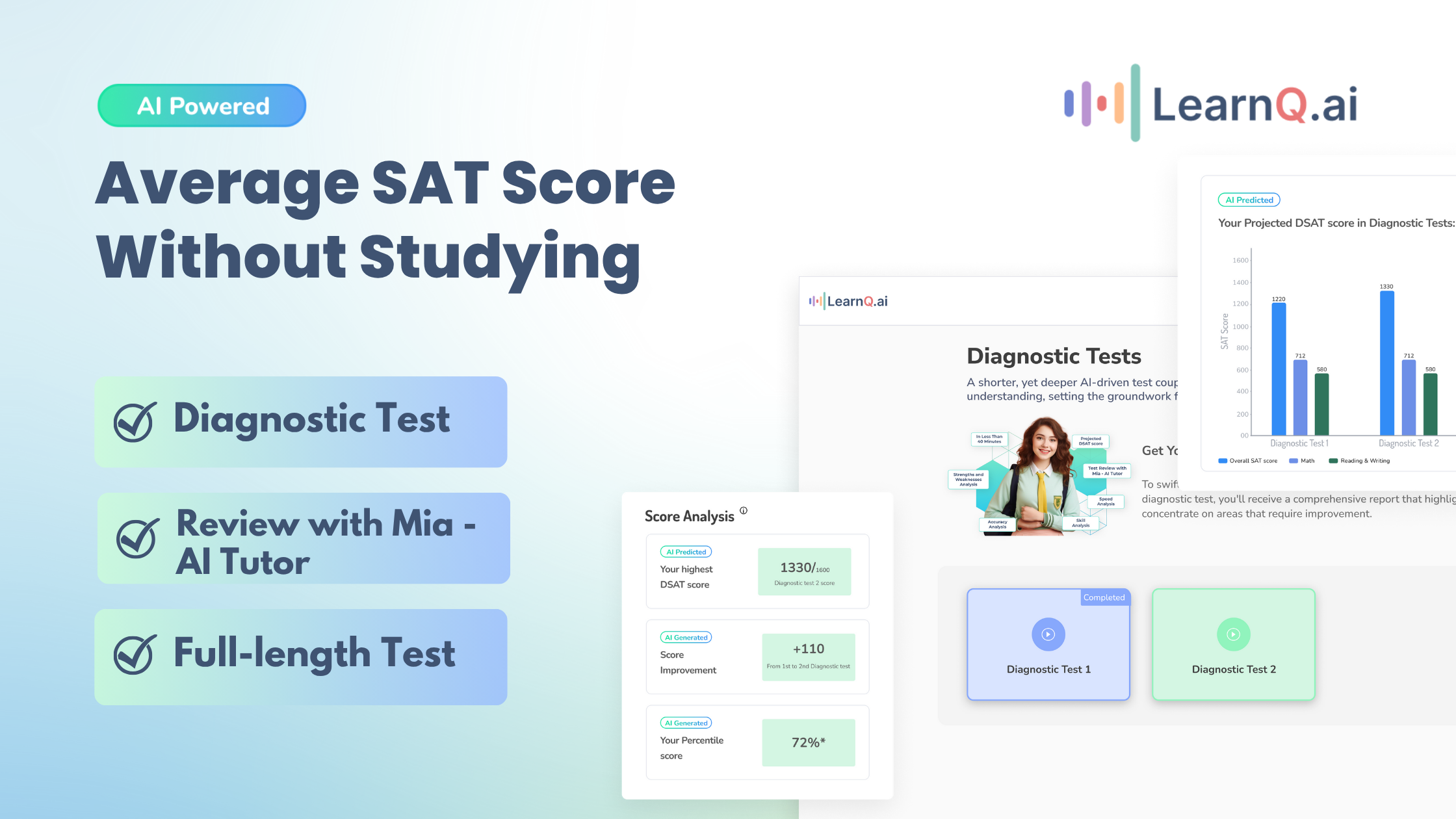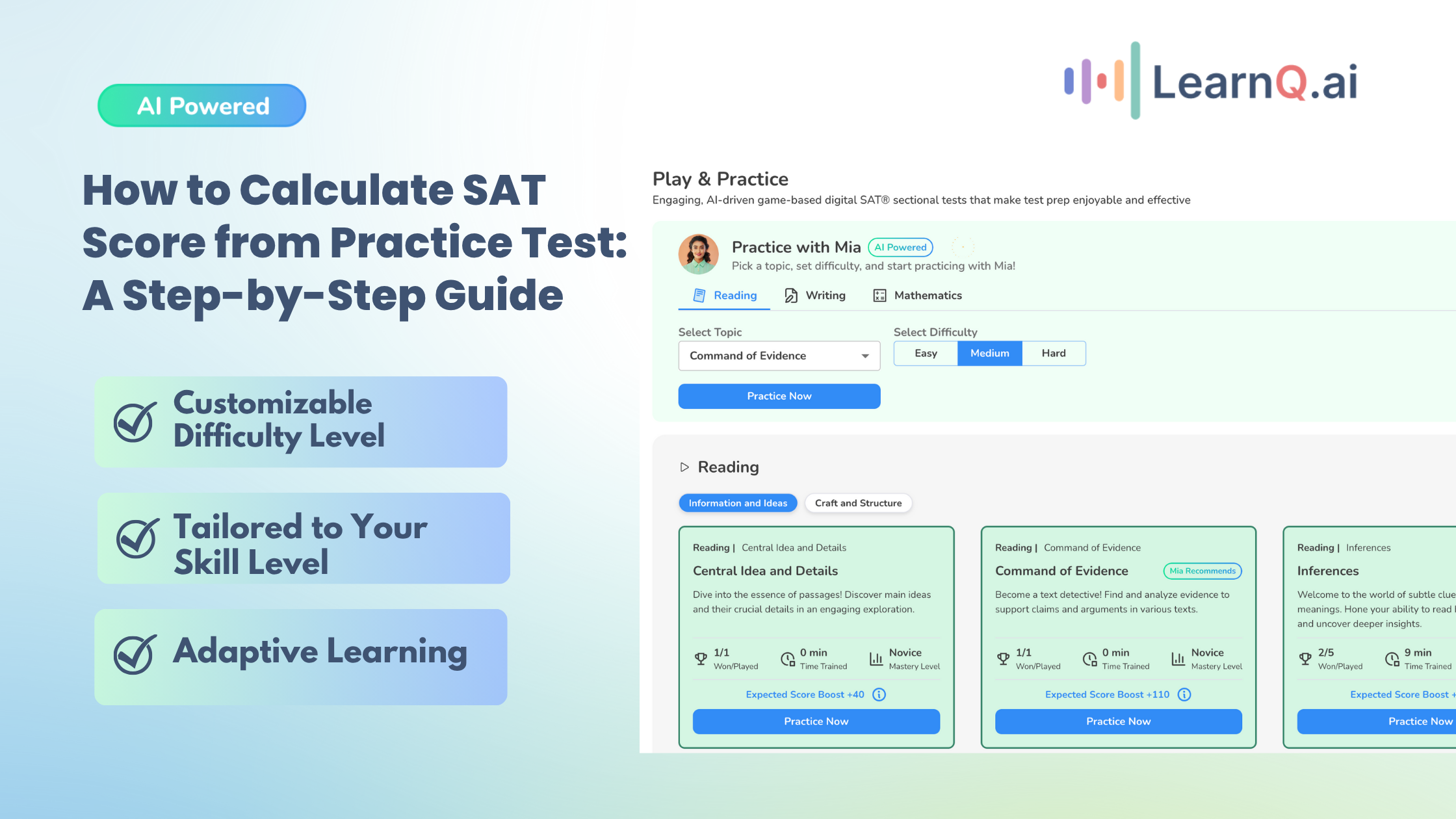The familiar scene of students hunched over desks, meticulously bubbling in answers on paper, is slowly fading into history. The SAT and PSAT, long-standing gatekeepers to college admissions, are undergoing a significant transformation: they’re going digital.
While the core purpose of these exams remains the same – to assess college readiness – the shift to a digital format brings about a wave of changes.
This comprehensive guide focuses on the key difference between digital SAT & PSAT. We’ll explore the key differences between these digital assessments, unveil the intricacies of the new adaptive testing structure, and discuss the impact this transformation has on various stakeholders within the education system. Additionally, we’ll provide valuable tips on effectively preparing for these digital exams.
Before we investigate further, let’s establish a clear understanding of the transition:
- Both the PSAT (Preliminary SAT) and SAT are transitioning from paper-based tests to computer-delivered assessments.
- This shift isn’t merely cosmetic. The digital format introduces a new testing environment, including adaptive question delivery and potential revisions to content.
- Although both exams go digital, it’s crucial to recognize the distinctions between the PSAT (a practice test for the SAT) and the actual SAT regarding difficulty level, score range, and question format.
Let’s get moving and try to understand its differences in detail.
Main Difference Between Digital SAT & PSAT
This comparative chart clearly outlines the difference between the digital SAT and PSAT.
| Feature | Digital SAT | Digital PSAT |
| Adaptive Test Structure | Fluid question flow may jump between topics within a subject area | Module-based, focuses on specific skill sets within a subject area (e.g., reading comprehension, vocabulary in Reading) |
| Difficulty Level | Generally more challenging, designed to assess college readiness | Less difficult, intended to prepare students for the SAT and gauge their strengths and weaknesses |
| Score Range | Maximum score of 1600 (800 in Reading and Writing, 800 in Math) | The perfect score is 1520 (760 in Reading and Writing, 760 in Math) |
| Question Types | May introduce new question formats to assess a broader range of skills | Primarily focuses on established question types to assess core skills |
Updated Digital Structure: What Changes Can We Expect?
The digital PSAT and SAT depart from the linear question format of traditional paper-based tests. Instead, they embrace a sophisticated approach called Multi-Stage Adaptive Testing (MSAT). Let’s investigate the workings of this dynamic system in the context of the key difference between Digital SAT & PSAT.
LearnQ.ai is Powered by VEGA AI—Is your Institute Next?
Give students a Duolingo-style test-prep platform with Shopify-level customization for tutors and institutes.
Multi-Stage Adaptive testing
The magic of Multi-Stage Adaptive Testing lies in its ability to adjust to each student’s performance. As students progress through the test, the difficulty of the modules adapts based on their answers.
Acing a series of questions in a particular module leads to the introduction of more challenging modules within the same skill area. Conversely, struggling with a concept prompts the system to present modules with a lower difficulty level to ensure understanding before moving on.
This ensures a tailored testing experience that accurately assesses a student’s abilities without being overly frustrating or too easy.
Shorter Testing Time:
Time is precious, and the digital format acknowledges that. The new digital SAT will be shorter, clocking in at around 2 hours compared to the traditional 3-hour test. This streamlined approach aims to achieve the same level of insight into student capabilities within a more concise timeframe.
Calculator Access Throughout Math:
No more scrambling for calculators during the math section! The digital SAT boasts a built-in calculator program similar to the one found on Desmos. While you can still bring your own approved calculator if preferred, the built-in option ensures everyone has access to the necessary tools. It’s important to note that a portion of the math section will still require solving problems without a calculator.
Testing on Laptops/Desktops:
The digital landscape necessitates digital tools. Students will take the PSAT and SAT on laptops or desktops. If you don’t have access to a computer, don’t worry! Testing centers will provide one for you. These computers will have a secure testing program to prevent internet access or distractions during the exam. Additionally, students can download the testing software beforehand on their devices for familiarity.
Increased School Scheduling Flexibility:
Schools rejoice! The digital format offers more flexibility for in-school PSAT and SAT administration. Traditionally, test dates were limited. However, with the digital platform, schools will have a designated window of time (a month or so) to administer the exams to different student groups on various days.
Shorter Reading Passages:
While the full scope of the digital SAT reading section remains under development, we do know shorter reading passages with a single corresponding question will be incorporated. There is some debate about the impact of the test’s predictive validity on college success, considering the prevalence of longer reading materials in higher education. Stay tuned for further updates on this aspect!
Enhanced Security:
The adaptive nature of the digital format throws a wrench in the plans of cheaters. Since the test tailors itself to each student’s performance, obtaining copies of questions and passages beforehand becomes futile. This change is particularly impactful for international testing, which has faced challenges with test security.
Career and College Guidance Integration:
The College Board is expanding its scope. The PSAT and SAT will now connect students not only to four-year colleges but also to vocational and trade programs. This ensures that even if students aren’t planning on a traditional college route, they still receive targeted and relevant career guidance through the testing process.
Faster Score Availability:
Waiting weeks for scores is a thing of the past. The digital format promises a quicker turnaround time, allowing students to access their results sooner.
Wants to get a hands-on experience in multi-stage adaptive testing? Try LearnQ.ai’s mock test.
Enhance your Digital SAT study routine with AI-driven insights and personalized practice tests.
Key Content Changes on the Digital Exams
Both PSAT and SAT are divided into verbal and math sections. Within each section, the test is further divided into modules. These modules focus on specific skill sets within a subject area.
Here’s a breakdown of the potential modules you might encounter in the digital PSAT and digital SAT:
| Verbal Section | Description |
| Reading Comprehension | Passages of varying lengths are followed by questions that assess your ability to understand the main idea, analyze arguments, and identify supporting details. |
| Vocabulary in Context | Identifying the meaning of words based on their usage within a sentence or passage. |
| Analysis of Writing Style | Evaluating the author’s purpose, tone, and use of rhetorical devices. |
| Math Section | Description |
| Problem-solving (Algebra and Geometry) | Applying algebraic and geometric concepts to solve real-world or mathematical problems. |
| Data Analysis | Interpreting and concluding charts, graphs, and other forms of data representation. |
| Understanding of Mathematical Concepts | Demonstrating knowledge of core mathematical concepts like functions, exponents, and probability. |
Note: This table provides a general overview of potential modules. The specific modules you encounter on the digital PSAT or SAT may vary depending on your performance throughout the test.
Want to have a deeper understanding of mathematical concepts? Read this blog!

Benefits of the Digital Format
The transition to digital testing isn’t just about a new interface and understanding the difference between digital SAT and PSAT; it offers a multitude of advantages for both students and test administrators. Here’s a closer look at some of the key benefits:
- Simplified Administration and Accommodation Processes: Gone are the days of meticulous test booklet distribution, collection, and physical security concerns. The digital format streamlines administration, reducing logistical hassles. Additionally, digital testing offers greater flexibility in accommodating students with disabilities. Features like text-to-speech conversion and on-screen magnification can be easily integrated, creating a more inclusive testing environment.
- Accelerated Score Availability: No more waiting weeks on pins and needles for results. The digital format allows for faster score processing and turnaround time. This quicker feedback loop provides valuable insights to students and educators sooner, allowing for more informed academic decisions.
- Increased Flexibility in Test Administration Dates: The digital format breaks free from the constraints of paper-based testing schedules. This opens doors to potentially more flexible testing windows throughout the year, potentially accommodating students with scheduling conflicts or those aiming for multiple test attempts.
Preparing for the Digital Tests
Conquering the digital PSAT and DSAT requires effective preparation strategies tailored to the new format. While high-quality digital practice material for the PSAT might be limited currently, here are some valuable tips to optimize your preparation for the digital SAT:
- Embrace Digital Practice Tests: Familiarize yourself with the digital testing environment by taking practice tests offered by the College Board or reputable test prep companies. These practice tests will not only help you hone your content knowledge but also allow you to get comfortable with the digital interface, including features like navigating between questions, highlighting text, and using the on-screen calculator.
- Master the Digital Tools: Don’t underestimate the importance of mastering the digital tools provided during the test. Practice using features like highlighting passages, flagging questions for later review, and utilizing the built-in calculator effectively. Becoming comfortable with these tools can save valuable time and reduce test anxiety on the actual exam day.
- Consider a Diagnostic Digital SAT: A diagnostic digital SAT can be a game-changer in your preparation journey. This type of practice test not only simulates the digital experience but also provides a detailed analysis of your strengths and weaknesses within the new format. Identifying areas requiring improvement allows you to focus your studying efforts strategically, maximizing your score potential.
Additional Tips for the PSAT:
While high-quality digital practice materials for the PSAT might be scarce at the moment, here are some general strategies that can still be highly beneficial:
- Supplement your preparation with online resources that offer practice questions aligned with the PSAT content areas.
- Familiarize yourself with the general format and question types typically encountered on the PSAT, even if the digital version introduces some variations.
By following these tips and staying updated on the availability of digital PSAT and DSAT practice materials, you can ensure you’re well-prepared to tackle the digital PSAT when the time comes.
LearnQ.ai is powered by VEGA AI—Is your institute next?
Offer students a Duolingo-style test-prep platform with Shopify-level customization for tutors and institutes.






Conclusion: Embracing Change and Charting Your Course
The Digital SAT’s Multi-Stage Adaptive Testing (MST) presents a unique challenge for students. But fear not! LearnQ.ai’s platform is designed to be your mirror to MSAT, offering a realistic and effective way to prepare, offering a clear understanding of the difference between digital SAT and PSAT.
Here’s how LearnQ.ai reflects the intricacies of MSAT:
1. Simulated Adaptive Testing: Just like the Digital SAT, LearnQ.ai’s mock tests don’t throw you into the deep end. We start with a diverse range of questions, mimicking the initial stage of MST, to assess your baseline knowledge and skills across various topics.
2. Customized Difficulty Progression: Based on your initial performance, the subsequent sections of our mock tests adapt in difficulty. Acing a section unlocks more challenging modules, while struggling prompts easier ones, just like the real MSAT. This personalized approach ensures you’re constantly challenged and learning.
3. Realistic Test Environment: LearnQ.ai goes beyond just questions. We create a mock test environment that mirrors the actual Digital SAT. You’ll experience the same flexibility and ease of navigation, allowing you to become comfortable with the digital format and focus on showcasing your abilities.
4. Built for Reliability: Connectivity issues can disrupt your flow during a crucial test. That’s why LearnQ.ai boasts a robust infrastructure designed to be resilient against such problems. You can focus on the test, confident that the platform will deliver a seamless experience, just like the actual Digital SAT environment.
By partnering with LearnQ.ai, you gain access to a powerful suite of tools specifically designed to help you conquer the difference between digital SAT and PSAT. With simulated adaptive testing, customized difficulty progression, a realistic test environment, and a reliable platform, you’ll be well-equipped to excel on test day.
With LearnQ.ai you’ll be well-equipped to face the digital SAT and achieve the score you deserve.
Partner with LearnQ.ai and take charge of your academic future! Sign up now!

